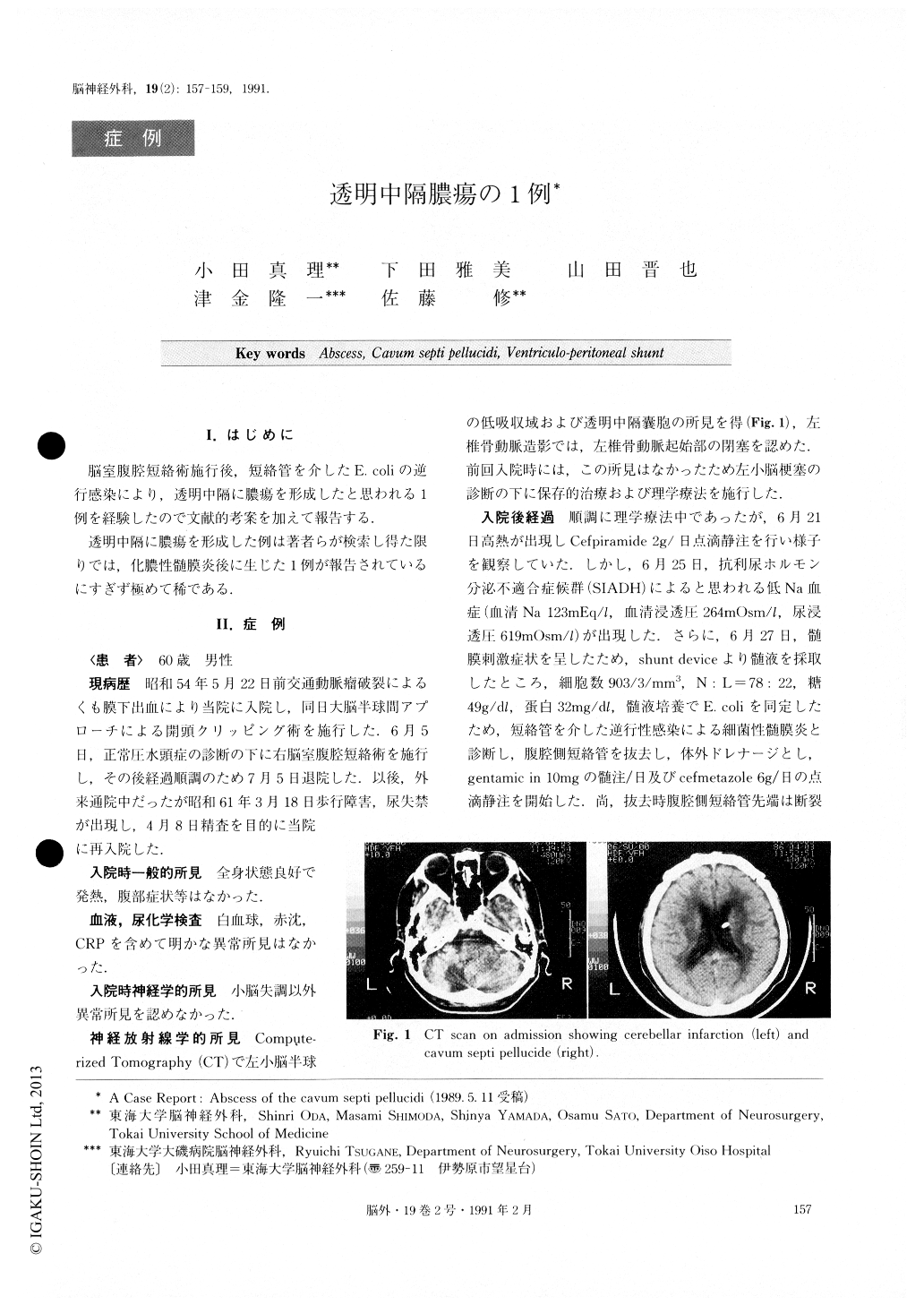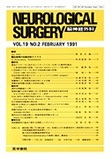Japanese
English
- 有料閲覧
- Abstract 文献概要
- 1ページ目 Look Inside
I.はじめに
脳室腹腔短絡術施行後,短絡管を介したE.coliの逆行感染により,透明中隔に膿瘍を形成したと思われる1例を経験したので文献的考案を加えて報告する.
透明中隔に膿瘍を形成した例は著者らが検索し得た限りでは,化膿性髄膜炎後に生じた1例が報告されているにすぎず極めて稀である.
Abstract
A rare case of an abscess in the cavum septi pellucidi (CSP) is described and previously reported cases are reviewed. A 60-year-old male was admitted to the hos-pital because a diagnosis of cerebellar hemisphere in-farction was made on CT scan. Seven years earlier, the patient had undergone a craniotomy for aneurysm clip-ping, and a ventriculo-peritoneal shunt was installed for normal pressure hydrocephalus 14 clays after the aneurysmal rupture. On his second hospitalization CT scan also demonstrated CSP but this was not associ-ated with ventriculomegaly. He was placed on a rehabi-litation regimen and his hospital course was uneventful. Two months later, however, he developed hyponatre-mia due to the syndrome of inappropriate secretion of antidiuretic hormone. After analysis of CSF obtained from the shunting device, a diagnosis of meningitis was made and CSF culture revealed E. coli infection. A part of the peritoneal tubing was torn and missing when the tube was removed from the peritoneal cavity and con-verted to outer drainage. Being treated with intrathecal and intravenous antibiotics administration, the menin-gitis subsided. However, CT scan taken twelve days af-ter the onset of the infection showed an abscess in CSP which showed ring enhancement after contrast media. Therefore, the patient continued to receive intravenous antibiotics to counter the mass effect clue to the abs-cess. The abscess had disappeared on follow-up CT scan obtained ten days later. The patient, however, eventually expired after iatrogenic hypernatremia associated with acute renal failure. The patient was submitted to an autopsy. The authors speculate that the abscess developed through a retrograde cisternal route after infection which had originated from bowel per-foration by the peritoneal shunt tube.

Copyright © 1991, Igaku-Shoin Ltd. All rights reserved.


